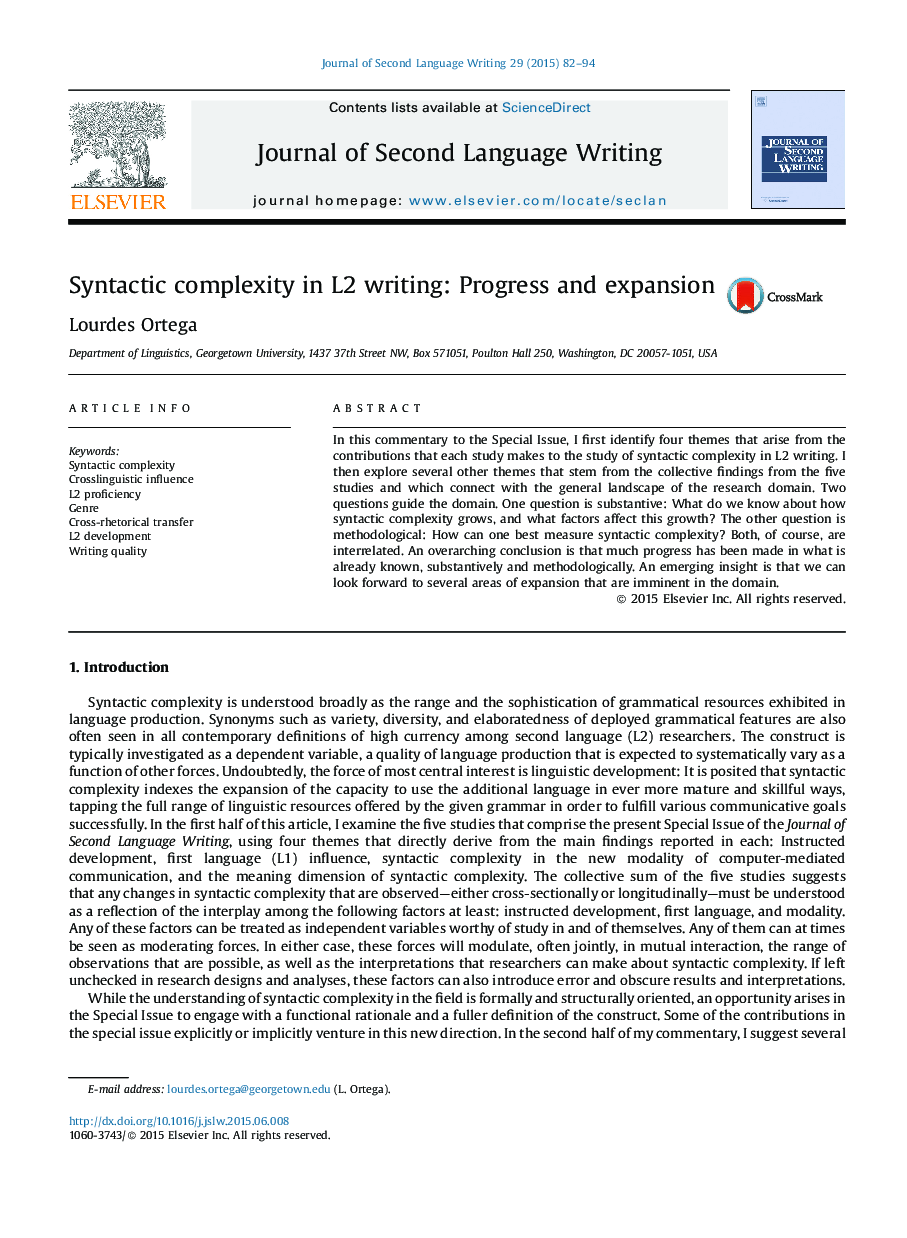| کد مقاله | کد نشریه | سال انتشار | مقاله انگلیسی | نسخه تمام متن |
|---|---|---|---|---|
| 363980 | 620942 | 2015 | 13 صفحه PDF | دانلود رایگان |
• I examine the five studies in the Special Issue of the JSLW, along four themes.
• Development, L1, meaning, and modality exert important influences on complexity.
• Much progress is seen in what is already known, substantively and methodologically.
• Future expansions should address successful L2 writing, genre, and proficiency.
• L2 writers strive for linguistic complexity fueled by the need to create complex meanings.
In this commentary to the Special Issue, I first identify four themes that arise from the contributions that each study makes to the study of syntactic complexity in L2 writing. I then explore several other themes that stem from the collective findings from the five studies and which connect with the general landscape of the research domain. Two questions guide the domain. One question is substantive: What do we know about how syntactic complexity grows, and what factors affect this growth? The other question is methodological: How can one best measure syntactic complexity? Both, of course, are interrelated. An overarching conclusion is that much progress has been made in what is already known, substantively and methodologically. An emerging insight is that we can look forward to several areas of expansion that are imminent in the domain.
Journal: Journal of Second Language Writing - Volume 29, September 2015, Pages 82–94
